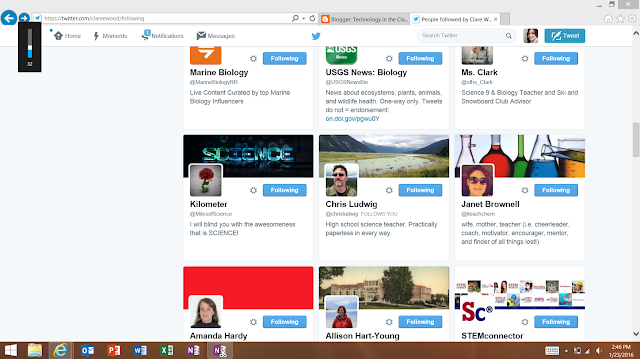At Grand Haven High School, where I’m
doing my student teaching, each student is equipped with a Dell Chromebook that
they keep for the entire school year. Each
classroom is equipped with a Smart Cart that includes a doc camera/control
panel, a desktop computer, and a DVD/VHS player that are all hooked up to a
projector which displays them on a Promethean Board. Each teacher also has a second desktop
computer for their desk and a Dell Chromebook to take home. It’s kind of crazy how much tech we have at
our fingertips. However, there are some
resources that are collecting dust.
When the Promethean Boards were issued
several years back, they came with Active Inspire software and a set “Activote”
controls for each classroom. These sets
of interactive clickers were rarely used because the games and quizzes took too
long for teachers to create. Now that
students have their own Chromebooks, teachers prefer to use Kahoot! and other
online interactive game resources.
Some teachers rarely or never use their
Promethean Board projectors in their classrooms. One teacher uses paper, whiteboard, class
discussion, and VHS in his classroom. Because
he has been teaching for a while and has collected several transparencies over
the years, he keeps a box of bulbs handy and reverts to his old cart projector. The sad thing is, it is more focused and
easier to read from than the newer energy efficient projectors.
Back when I was in high school, teachers
mostly wrote on the whiteboard. Some
teachers had their own projectors, like I mentioned above, and would display
their transparencies on the whiteboard. I
don’t remember if teachers had computers or not. I remember them doing all of their grading in
gradebooks. We wrote in class; we only
used computers outside of class to type up a paper for English class. I probably did more on computers when I was
in grade school and junior high.
In grade school, our class would go to
the computer lab about 2 or 3 times a week.
We had the old Mac computers with floppy disc programs. We would play games like Oregon Trail or Dino
Tycoon, work in math or science programs, and we would work in typing programs
so that we could learn how to type. I
junior high, we focused more on typing accuracy and speed, and learning how to
fully utilize Microsoft Word.
I think that the technology available to
most students of this generation is incredible.
However, I hope that ALL teachers don’t go ALL tech. I’ve already noticed that the vast majority
of students have horrible handwriting.
And, what if there comes a day that technology does fail us? Technology should aid our instruction, but
not be our instruction. It is important
for today’s students to be well-rounded by becoming proficient learners and communicators
with technology and without.




